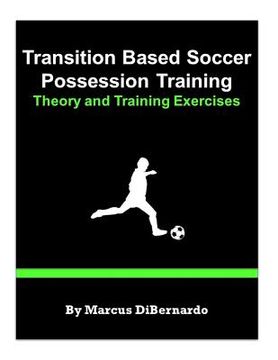Synopsis "Transition Based Soccer Possession Training: Theory & Training Exercises"
The most important time in a soccer game is when the ball is lost or gained, that is the point of transition. The team that wins possession of the ball, normally has a small window of opportunity to attack the opposition, before they can get organized defensively. In modern soccer, the speed of the counter attack or attacking transition speed is critical in creating scoring chances. Teams will often leave a minimum of one player high when defending, ready to spring into the counter attack the moment the ball is won. A team that is skilled in attacking transition, will look to play early balls into depth behind the defense to create goal scoring chances. Attacking transition is also very effective when a player with excellent pace, runs with the ball at speed, advancing it down the field to create scoring chances, not allowing the defense time to organize. However, attacking transition does not always start by going forward. If the ball is recovered and there are no good options to advance the ball forward into a dangerous position, the ball can be worked backwards or square. By simply maintaining possession of the ball, players on the attacking team are allowed time to open up and spread out the field, moving out of their compact defensive shape. The opposite of attacking transition is defensive transition. If a team in possession loses the ball, they must re-group and organize themselves very quickly, in order to stop the opponents from launching an immediate attack. Defensive transition involves quickly pressuring the ball, while dropping numbers behind the ball into a compact shape. By slowing the ball down and getting players back, it makes it harder for the attacking team to penetrate the attacking area. Transition both from an attacking and defensive standpoint is something that needs to be trained regularly in all possession exercises.

